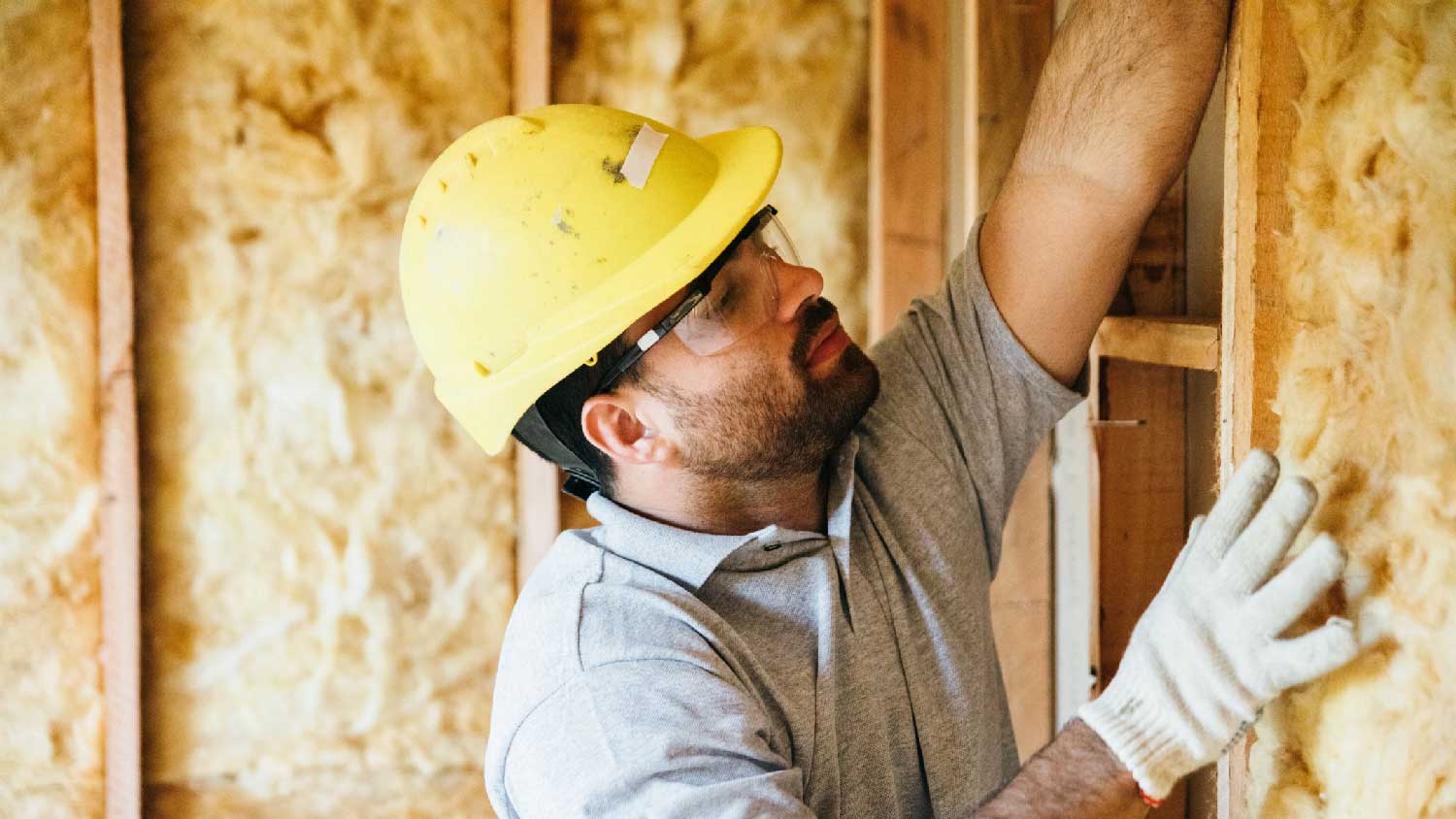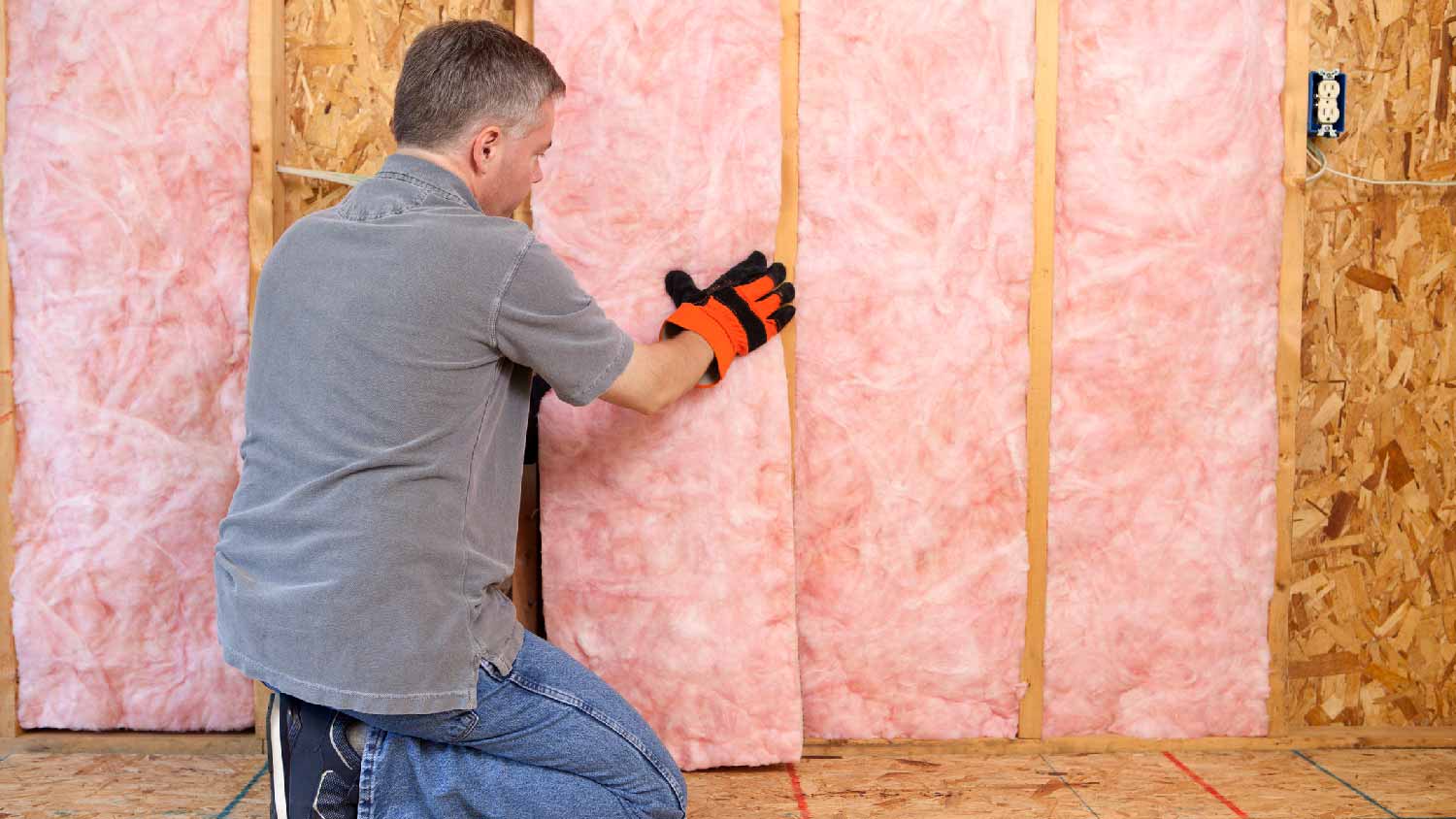How Much Does Attic Insulation Removal Cost? [2025 Data]
The average attic insulation removal cost is $900, but often ranges between $600 and $1,200, depending on attic size and whether your pro has to work with hazardous materials.


The average attic insulation removal cost is $900, though most homeowners spend between $600 and $1,200. In cases where rodents or hazardous materials are present, the cost can increase significantly.
Learn all the factors that will influence your attic insulation removal cost so you can plan your budget accordingly.
Attic Insulation Removal Cost Factors
When planning your budget for insulation work in your home, it's important to consider the potential attic insulation removal cost if the job calls for it. While many situations only require you to cover up existing insulation with new, many others, such as when the insulation has damage, will require you to replace it.
The cost of adding attic insulation or the cost of installing a radiant barrier can both have a significant pricing effect if removing existing insulation is also a factor. Additionally, there can be several other reasons you may need to remove insulation from your attic floor or ceiling. Here are the associated costs for the project and what to expect.
Insulation Types
The type of attic insulation your home has will affect the cost of its removal. Attic insulation comes in a few varieties, including blown-in, rolls or batts, and rigid forms, all of which demand a specific approach when removing them. Professionals can remove blown-in insulation that's in good condition with a large vacuum device, while batts, rolls, and rigid materials will require hand removal, which is more labor-intensive.
Modern blown-in insulation materials include cellulose, fiberglass, and rock wool. Rolls and batts come in fiberglass, rock wool, and natural fibers, while rigid insulation varieties include foam boards and spray foams. Additionally, plumbing in your attic may include pipe wraps of fiberglass, foam, or other materials.
Expect costs of between $1 and $2 per square foot to remove insulation, with blown-in varieties near the lower end and rigid types near the top end. Keep in mind that those prices are for dry and in good condition non-asbestos insulation.
| Insulation Type | Average Removal Cost |
|---|---|
| Blown-in | $600–$1,000 |
| Batts and rolls | $800–$1,100 |
| Rigid | $900–$1,200 |

Project Size
The square footage of your attic space will help determine the total cost of the insulation removal project. The bigger the space is and the more insulation material it contains, the more it will cost to accomplish the removal goal.
However, the difficulty of reaching particular parts of the attic is also a significant pricing factor that could add up to $1 per square foot to the price tag for parts that are challenging to reach.
| Attic Square Footage | Average Insulation Removal Costs |
|---|---|
| 200 | $200–$400 |
| 400 | $400–$800 |
| 600 | $600–$1,200 |
| 1000 | $1,000–$2,000 |
| 1500 | 1,500–$3,000 |
Labor
If your attic insulation removal project is part of installing new insulation in the space, your contractor will include the cost of labor in the pricing estimate for the entire job. However, it's good to know that the labor price you'll pay ends up being between $35 and $85 per hour for the removal portion of the work.
Location
Where your house is located affects the cost of attic insulation removal. While labor costs vary by location, this factor aligns with the cost of living in your area and is a less significant pricing factor than the climate in your area.
Cold climates require thicker insulation to achieve higher R-values or insulating abilities. Because of this, it can cost more to remove the larger amounts of insulation in northerly-located homes than those situated in more moderate climate zones.
| Home Location | Average Removal Cost Range |
|---|---|
| Southern states | $600–$1,000 |
| Northern states | $700–$1,200 |
Attic Insulation Removal With Hazardous Materials Cost Factors

Attic insulation removal costs are often affected by other situations, which are often out of our control. Things like animals, pests, mold, and the presence of asbestos can significantly increase the project's price tag.
Pests
Insulation provides comfort and warmth for our families. Unfortunately, it can provide the same luxuries for rodents and pests. These unwelcome tenants often leave behind their waste products, which can damage insulation, as well as cause a literal stink that only removal can get rid of. In severe cases, the contamination can be a health concern for some.
While you won't likely pay more to remove rodent-damaged insulation than insulation that's in good shape, getting rid of the pests that cause the damage is essential for the health of your new insulation. Pest removal before, during, or after the insulation removal will increase the project cost by as much as $8,000 in severe cases.
Ongoing pest control costs: $110–$260
Asbestos
It can be hard to know what asbestos looks like and if it's present in your home, especially when it comes to attic insulation. Vermiculite and various blown-in insulation types often contain asbestos, and there's a good chance that if your home's construction date is before 1980, its insulation will contain some level of the stuff. Knowing who to call for asbestos removal is important, and the cost of safely removing it can be significant.
Asbestos removal cost: $1,190–$3,255
Mold
Roof damage, water leaks, condensation, and HVAC problems can all cause water damage, including mold in your insulation. Worse yet, a mold infestation in the lower parts of your home doesn't necessarily mean that your attic insulation is unaffected.
If your attic insulation shows signs of mold infestation, hiring a specialist is necessary. In any case, expect the cost of removing moldy insulation to far exceed that of removing insulation with no mold present.
Mold remediation cost: $1,225–$3,750
DIY Attic Insulation Removal vs. Hiring a Pro
While DIY attic insulation removal is possible, it's not recommended. Asbestos, rodent and critter waste, and the potential presence of mold can make performing the task risky to your health.
If you choose to do it yourself, you can save some money on the cost of labor. However, you still may need to purchase adequate personal protection equipment, including at least work clothes, gloves, respirator or mask, and eyewear. You may also need to rent an insulation vacuum at a cost of between $200 and $300 per day.
Most homeowners choose to include the insulation removal process in their price bids for whatever other work is taking place, whether insulation replacement or a remodeling project. A nearby attic insulation professional will ensure everything is handled correctly, safely, and cost-effectively.
Cost of Common Attic Insulation Removal Add-Ons

Removing your attic insulation is most often part of a larger project, such as a remodel of all or part of your home or an insulation replacement job. When you remove the insulation, it's also an excellent time to accomplish additional tasks like repairing any existing roof damage or having a mold inspection. You can also consider adding other projects to increase the overall energy efficiency of your home.
Roof repair cost: $390–$1,920
Mold inspection cost: $300–$1,045
Home energy audit cost: $210–$700
Crawlspace encapsulation cost: $5,000–$15,000
Basement insulation cost: $1,800–$3,000
Wall insulation cost: $1,400–$6,300
Garage insulation cost: $1,900–$7,700
HVAC replacement cost: $5,000–$12,500
Tips to Reduce Cost While Removing Attic Insulation
While doing the job yourself can reduce some costs when removing attic insulation, the project is best left to the pros for safety. That said, there are a few other places to cut costs on the removal part of an insulation project. However, there are some steps you can take to help control the overall price of insulating when removal is part of the task.
Take advantage of federal, state, and local energy-efficiency rebates and incentives. Your insulation professional can help make sure you receive any and all applicable benefits.
Determine if your existing insulation requires removal in whole or in part with the help of your insulation professional. If it's in good condition, you can simply install new insulation over the existing materials.
How Angi Gets Its Cost Data
Home is the most important place on earth, which is why Angi has helped more than 150 million homeowners transform their houses into homes they adore. To help homeowners with their next project, Angi provides readers with the most accurate cost data and upholds strict editorial standards. We extensively research project costs to develop the pricing data you see, so you can make the best decisions for you and your home. We rely on reputable sources, including the U.S. Bureau of Labor Statistics, academic journals, market studies, and interviews with industry experts—all to ensure our prices reflect real-world projects.
Want to help us improve our cost data? Send us a recent project quote to costquotes@angi.com. Quotes and personal information will not be shared publicly.
Frequently Asked Questions
The life span of insulation is between 20 and 100 years. At that time, existing insulation can fall victim to gravity, resulting in compression, which reduces its insulating protection or R-value. If you can't simply add more insulation over the existing material, removing the old to increase the effectiveness of the new can reduce your energy bills and make the project worth the time and money investment.
The total cost to insulate an attic averages $2,100. Adding the removal of existing insulation materials costs an average of $900, bringing the total price to $3,000. However, there are numerous pricing variables in both the removal and installation parts of the project. The existence of mold, asbestos, or pests can dramatically increase the job's cost, while not having to remove existing insulation can substantially reduce its price.















